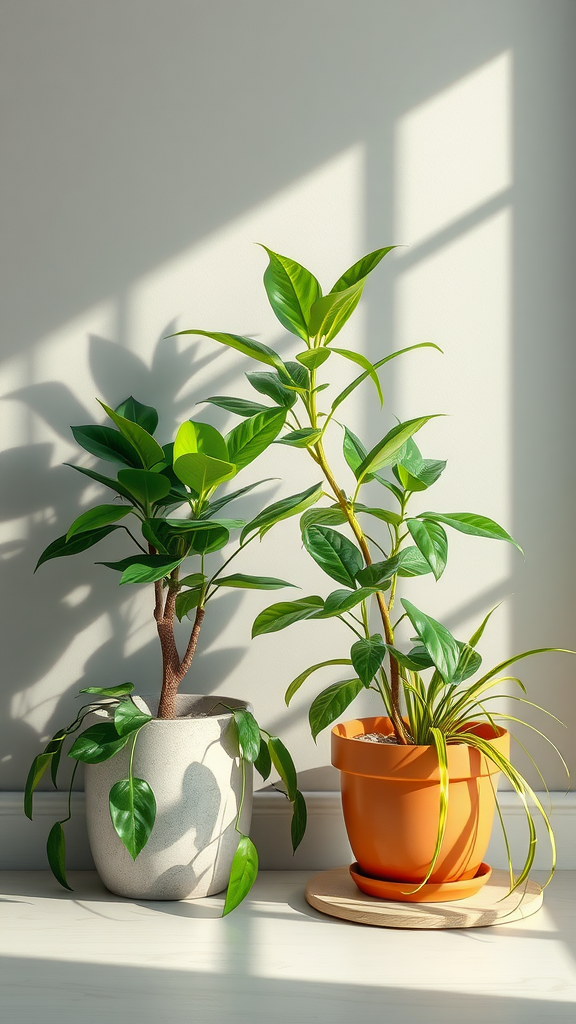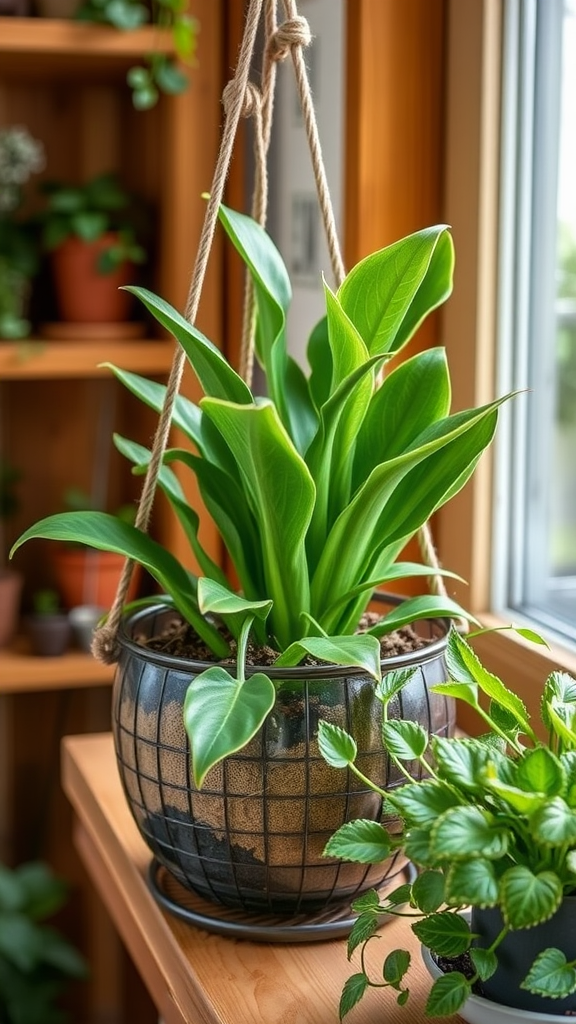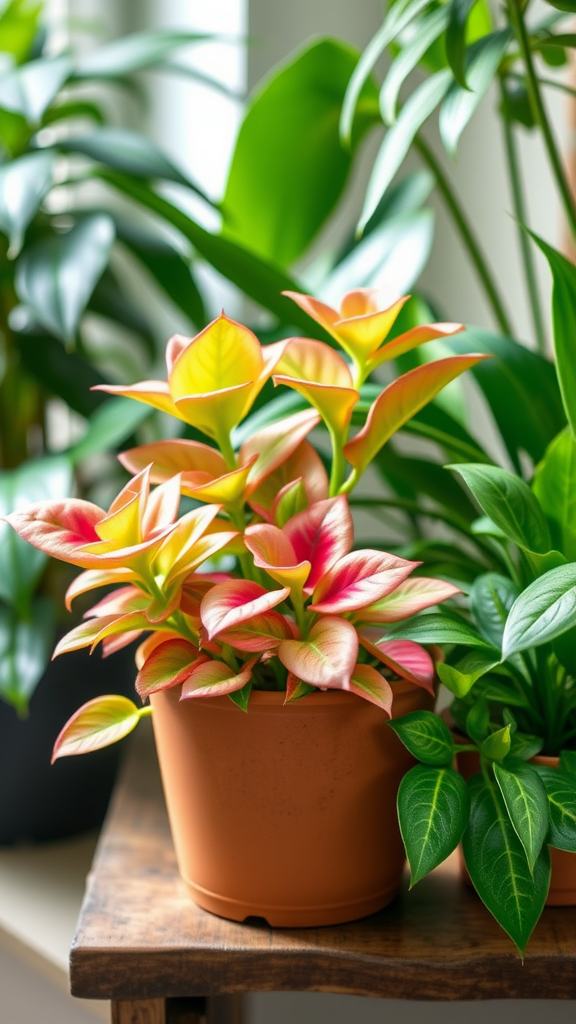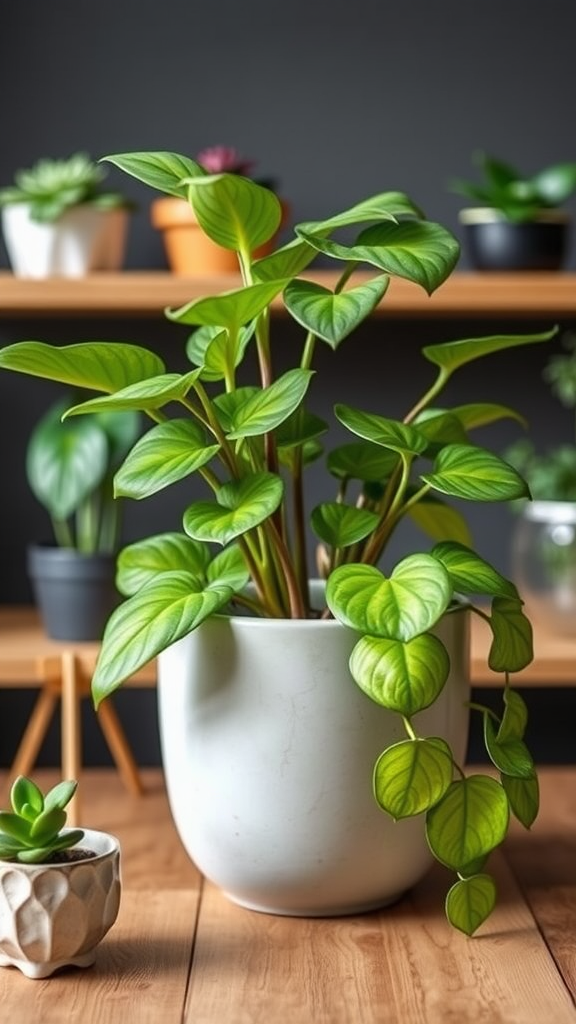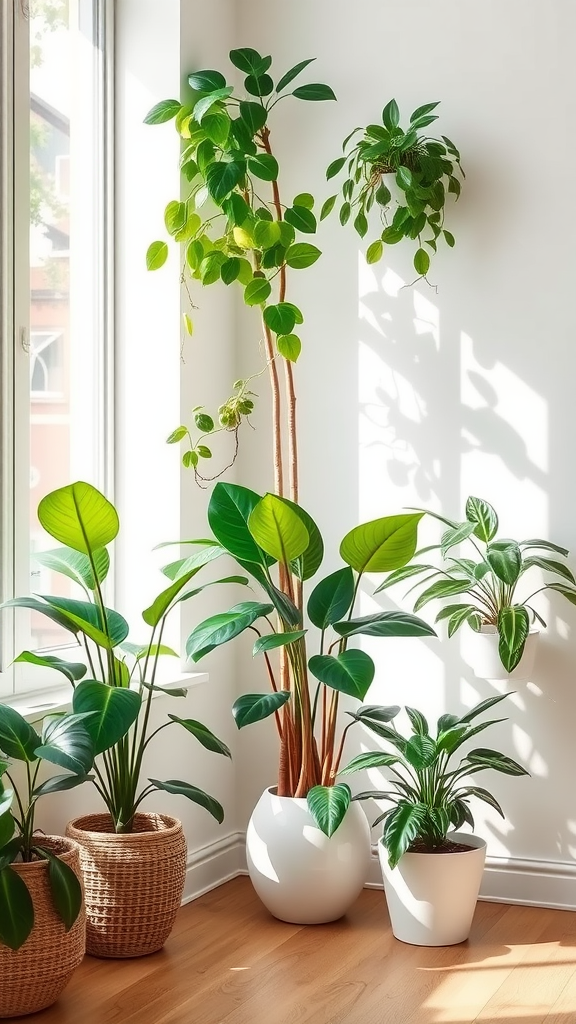The Best Low-Light Plants That Thrive in Any Indoor Space
Bringing greenery into your home is a fantastic way to enhance your space and improve your mood. However, not everyone has bright, sunny rooms for their plants to thrive in. Fortunately, there are many low-light plants that not only survive but actually flourish in less-than-ideal lighting conditions. Here are some excellent options to consider:
Snake Plant
The Snake Plant, also known as Sansevieria or Mother-in-Law’s Tongue, is one of the most resilient low-light plants. Its tall, upright leaves are a striking addition to any room. This plant can tolerate neglect, requires minimal water, and is perfect for beginners. Place it in a corner or on a shelf, and watch it thrive even with low natural light.
Pothos
Pothos, or Epipremnum aureum, is another fabulous choice for low-light spaces. This trailing vine is incredibly forgiving and can adapt to various lighting conditions. Not only does it purify the air, but its heart-shaped leaves add a charming vibe to any indoor setting. You can allow it to cascade from a hanging pot or train it up a trellis.
ZZ Plant
The ZZ Plant, scientifically known as Zamioculcas zamiifolia, is celebrated for its glossy leaves and low maintenance. It thrives in low light and can go long periods without water. Its tolerance for neglect makes it perfect for busy individuals or those new to plant care. Place it in a spot with indirect sunlight, and it will reward you with a lush appearance.
Cast Iron Plant
If you’re looking for a plant that can withstand almost anything, consider the Cast Iron Plant, or Aspidistra elatior. This hardy plant can survive in dark corners and requires little upkeep. Its broad, dark green leaves add a touch of elegance. Just make sure to water it sparingly, as it prefers dry soil.
Chinese Evergreen
Chinese Evergreen, or Aglaonema, is known for its colorful, variegated leaves that bring life to any low-light area. It is an excellent choice for offices or rooms with limited natural light. This plant is quite forgiving if you miss a watering now and then. Just keep it away from chilly drafts, and it will thrive!
Peace Lily
The Peace Lily, or Spathiphyllum, is not just a beauty; it’s also an air purifier. It produces stunning white flowers even in low light and loves a bit of humidity. Water it when the topsoil feels dry, and it will reward you with fresh blooms. Just keep in mind that Peace Lilies are toxic to pets, so check your home environment before bringing one in.
Philodendron
Philodendrons are known for their lush foliage and easy-going nature, making them ideal low-light plants. They come in various varieties, from bushy to climbing types. Place a philodendron on a shelf or let it trail off a hanging planter. This plant loves indirect light and can do well with minimal care.
Spider Plant
The Spider Plant, or Chlorophytum comosum, is a classic houseplant that thrives in less light. It features long, arching leaves and can produce baby spiderettes. This plant is also safe for pets, making it a family-friendly option. Water it when the soil feels dry, and watch it flourish.
Tips for Caring for Low-Light Plants
- Water Sparingly: Overwatering is a common mistake. Always let the top inch of the soil dry before adding more water.
- Rotate Your Plants: To ensure even growth, rotate your plants every few weeks to expose all sides to light.
- Dust the Leaves: Dust can block light; gently wipe the leaves with a damp cloth to keep them clean.
- Fertilize Wisely: During the growing season, use a diluted liquid fertilizer every couple of months.
Low-light plants into your indoor space can significantly boost the atmosphere, purify the air, and promote a sense of calm. Whether you choose a Snake Plant for its dramatic form or a Peace Lily for its delicate blooms, these plants will surely enhance your home, even in the darkest corners. Embrace the beauty of nature indoors!
Care Tips for Maintaining Healthy Low-Light Plants
If you love plants but live in a low-light space, don’t worry! Some remarkable plants can thrive in dim conditions, adding beauty and freshness to your home. Caring for low-light plants is straightforward when you follow a few essential tips. Let’s explore the best practices for maintaining these green companions.
Understanding Low-Light Plants
Low-light plants are perfectly suited for homes or offices with limited natural light. They adapt well to shade and can still grow beautifully. Popular choices include:
- Snake Plant
- Pothos
- ZZ Plant
- Cast Iron Plant
- Peace Lily
Watering Wisely
One of the most crucial aspects of plant care is watering. Low-light plants are generally more tolerant of underwatering than overwatering. Here are some tips:
- Check the soil: Before watering, stick your finger about an inch into the soil. If it feels dry, it’s time to water.
- Water thoroughly: When you do water, ensure it saturates the soil completely, allowing excess to drain out. This promotes root health.
- Stick to a schedule: Depending on your plant, watering every two to four weeks is usually sufficient in low-light conditions.
Picking the Right Soil
The choice of soil can make a big difference in how well your low-light plants thrive. Here are some considerations:
- Well-draining mix: Use a potting mix designed for indoor plants that drains well. This helps prevent waterlogging.
- Organic matter: Look for soil that contains organic materials like peat moss or bark to retain moisture while ensuring proper air circulation.
Optimal Potting Practices
Choosing the right pot is as vital as picking the right soil. Here are some pointers:
- Size matters: Ensure the pot size is appropriate for the plant. A pot that’s too small restricts growth, while one that’s too large can retain too much moisture and lead to root rot.
- Drainage holes: Always opt for pots with drainage holes to ensure excess water can escape, promoting healthy roots.
Placement and Light Conditions
Even low-light plants need some light! Here’s how to set them up:
- Indirect light: Place your plants in areas where they can receive indirect sunlight. This helps them thrive.
- Rotate plants: Occasionally spinning your plants can ensure all sides receive light evenly, promoting balanced growth.
Regular Maintenance
Consistent care helps keep low-light plants healthy. Consider these maintenance tips:
- Dust leaves: Gently wipe the leaves with a damp cloth to remove dust. This allows the plant to breathe better.
- Trim dead leaves: Regularly prune dead or yellowing leaves to promote healthier growth.
- Fertilization: Use a balanced fertilizer sparingly during the growing season (spring and summer) to encourage growth without overwhelming your plant.
Identifying Problems Early
Being proactive can save your plants from serious issues. Watch for these signs:
- Yellowing leaves: This often indicates overwatering, so adjust your watering schedule accordingly.
- Leaf drop: If leaves are dropping, it could mean your plant needs more light.
- Wilting: Wilting may suggest underwatering or root problems, so check the soil moisture levels.
By keeping these care tips in mind, you can successfully nurture low-light plants in your home, ensuring they remain vibrant and healthy. Embracing low-light plants not only enhances your indoor space but also contributes to cleaner air and a refreshing ambiance. Remember to enjoy the journey of plant parenting, as every little sprout adds joy to your living area!
Conclusion
Selecting the right low-light plants for your indoor spaces can significantly enhance the ambiance of your home or office. Whether you choose easy-to-care-for options like snake plants and pothos or more unique selections like ZZ plants and peace lilies, you can bring a touch of nature into your environment without worrying about too much sunlight. These plants not only purify the air but also add aesthetic value to any space.
To keep your low-light plants thriving, remember the basics of plant care. Water them appropriately, ensuring the soil has adequate drainage to prevent root rot. Consider the humidity levels in your space, as some plants prefer a bit more moisture in the air. Fertilizing during their growing season will provide essential nutrients they need to flourish.
With the right choices and proper care, these resilient plants can adapt and thrive in lower-light conditions, making them perfect companions for any indoor setting. Feel empowered knowing you can establish a green oasis in your home, regardless of how much natural light it receives. Embrace the beauty of low-light plants, and enjoy the tranquility and vibrancy they bring to your life. By taking small steps to incorporate them into your decor, you can create a lush, vibrant atmosphere that enriches your everyday experiences. Happy planting!

